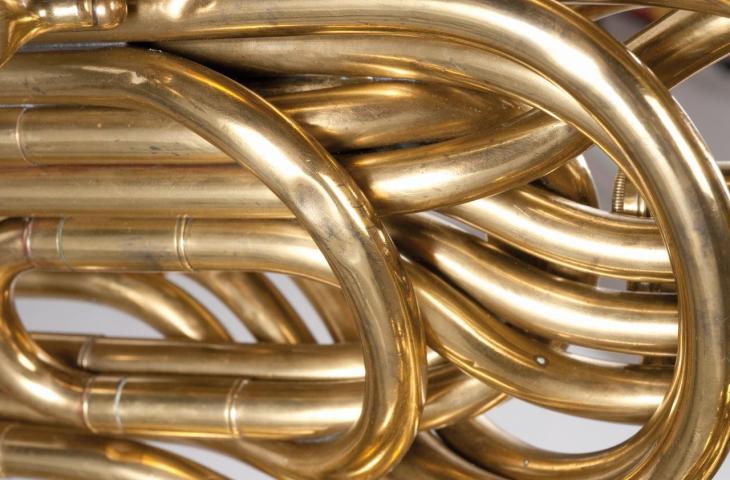Trombone with seven bells

Trombone with seven bells, Adolphe Sax, Paris, end 19th century, inv. 1288
Trombone with seven bells

Trombone with seven bells, Adolphe Sax, Paris, end 19th century, inv. 1288
Trombone with seven bells

Trombone with seven bells, Adolphe Sax, Paris, end 19th century, inv. 1288
With his invention of six independent valves in 1852, perfected in 1867, Adolphe Sax attempted to give the trombone a new verve. The instrument had barely changed since its origin in the fifteenth century, and makers of it regarded the slide as old-fashioned and awkward. With this new system, the fundamental note and its series of harmonics could be altered by depressing one of the six valves, rather than using the slide. The instrument was initially received with enthusiasm and a class was even established at the Paris Conservatory for the six-valve trombone. At one point it looked as though the instrument would indeed replace the old slide trombone. However, its complex construction and the new, complex fingering served rapidly to dim its success.
The trombone pictured here has seven bells. It applies the principle of six independent valves, each of which connects to its own bell. The seventh and largest bell sounds when none of the valves is in use. The seven bells correspond to the seven possible positions of the earlier slide.